What Are GERD (aka Acid Reflux or Heartburn) and IBS?
Gastroesophageal reflux disease (GERD) aka acid reflux or heartburn and functional gastrointestinal disorders (FGIDs) are common health conditions.
Irritable bowel syndrome (IBS) is a type of FGID that often overlaps with GERD or functional heartburn (FH).
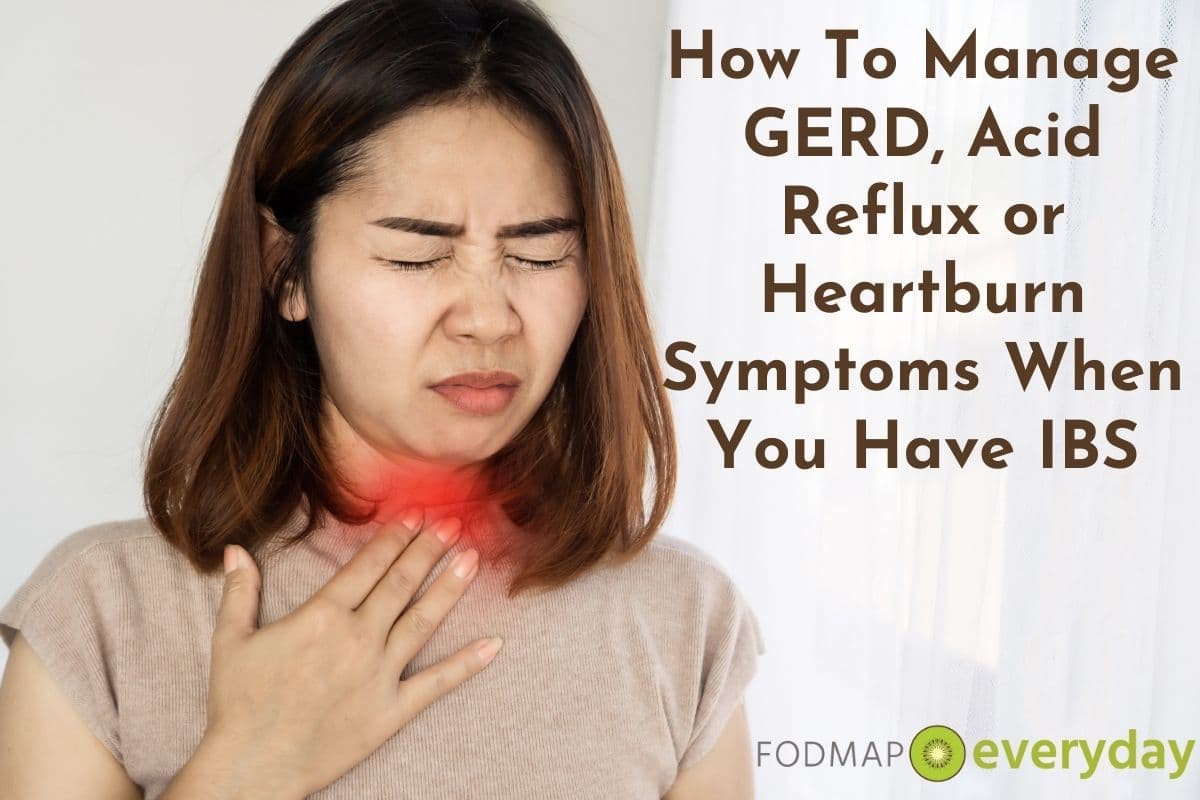
Perhaps you have experienced a burning sensation in your esophagus or above your stomach after you have eaten? Do you know what caused this painful symptom? Do you know what you can do to help avoid this in the future?
GERD and FH can be tricky to manage, and it can be confusing to figure out the best approach for reducing the symptoms.
This article focuses on the acidity of foods and how to tailor a diet to accommodate this issue if you also have IBS.
Managing GERD, Acid Reflux or Heartburn
Treatment for GERD typically includes medications for symptom management, lifestyle modifications, and/or dietary strategies.
For this article, we will focus mainly on how diet can help control or alleviate the symptoms associated with GERD, acid reflux or heartburn focusing on the acidity of foods.

For more in-depth information on GERD and IBS read: GERD, IBS and The Low FODMAP Diet
For information on medications, please refer to our article Medications & Supplements for IBS.
Adjusting Your Diet & Eating Patterns for Managing GERD, Heartburn or Acid Reflux
The current science for dietary recommendations is inconsistent, and therefore it is often necessary to personalize dietary management for GERD. Some of the recommendations involve changes to meal patterns and timing.
Reducing the overall size of meals can be a great preventative strategy for reducing symptoms. Avoiding late-night eating is another. It can take up to four hours for 90% of the food in a meal to move out of the stomach.1 Therefore, reducing the volume of food at meals and not eating too close to bedtime can be great approaches that are not overly restrictive modifications.
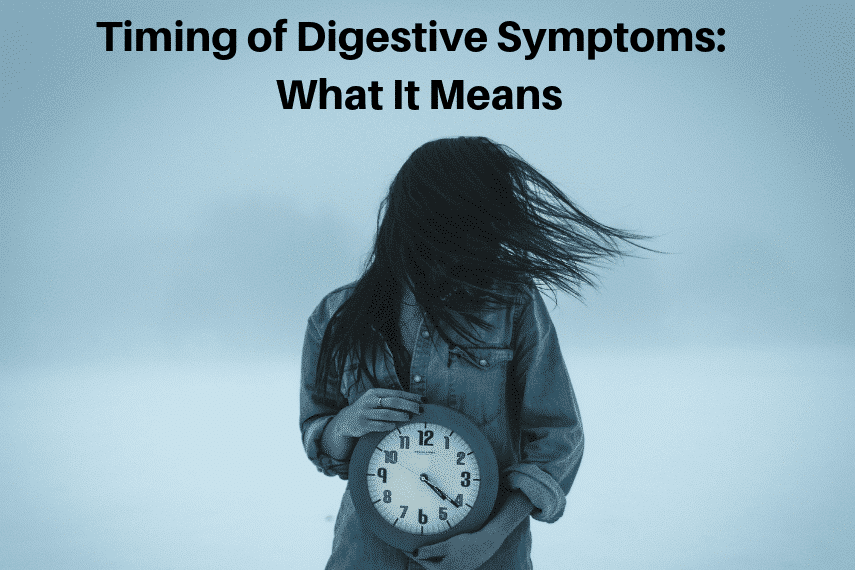
You May Want To Read: Timing of Digestive Symptoms: What It Means
Limit Certain Foods That May Cause Acid Reflux Symptoms
A strategy that some people find helpful is to limit certain foods that can be irritating. These include chocolate, peppermint, carbonated drinks, raw onions, spicy foods, and citrus. Many of these foods may already be off limits due to your IBS and if you are following the low FODMAP diet.
Alcohol can also be a problem for those with GERD.2

Learn more about alcohol and the low FODMAP diet here: Drinking Alcohol On The Low FODMAP Diet
Again, this list may not apply to everyone who has GERD, and often times only one or two of the foods might be a problem. Working with your doctor and dietitian can be a great way to figure out your own personalized plan for dietary changes that help with reducing symptoms.
An easy, yet very helpful approach, is to keep a food journal specifically designed to track GERD symptoms. By writing down what you have eaten, how much, when you have eaten, and also recording any resulting symptoms, you might be able to determine patterns. This can be helpful in general, and many dietitians will ask you to keep a journal before your first meeting anyway, so this is a good suggestion regardless.
Acidity and GERD
Let’s talk in more depth about the group of irritating, acidic foods. Avoiding acidic foods may help some people who have GERD and acid reflux symptoms. The acid level of foods prior to digestion is determined by measuring the pH value using a pH meter or pH test papers.3 You might remember this from high school science class. The pH scale ranges from 0 to 14, with 7 being a neutral value. The lower the pH, the more acidic a food will be.
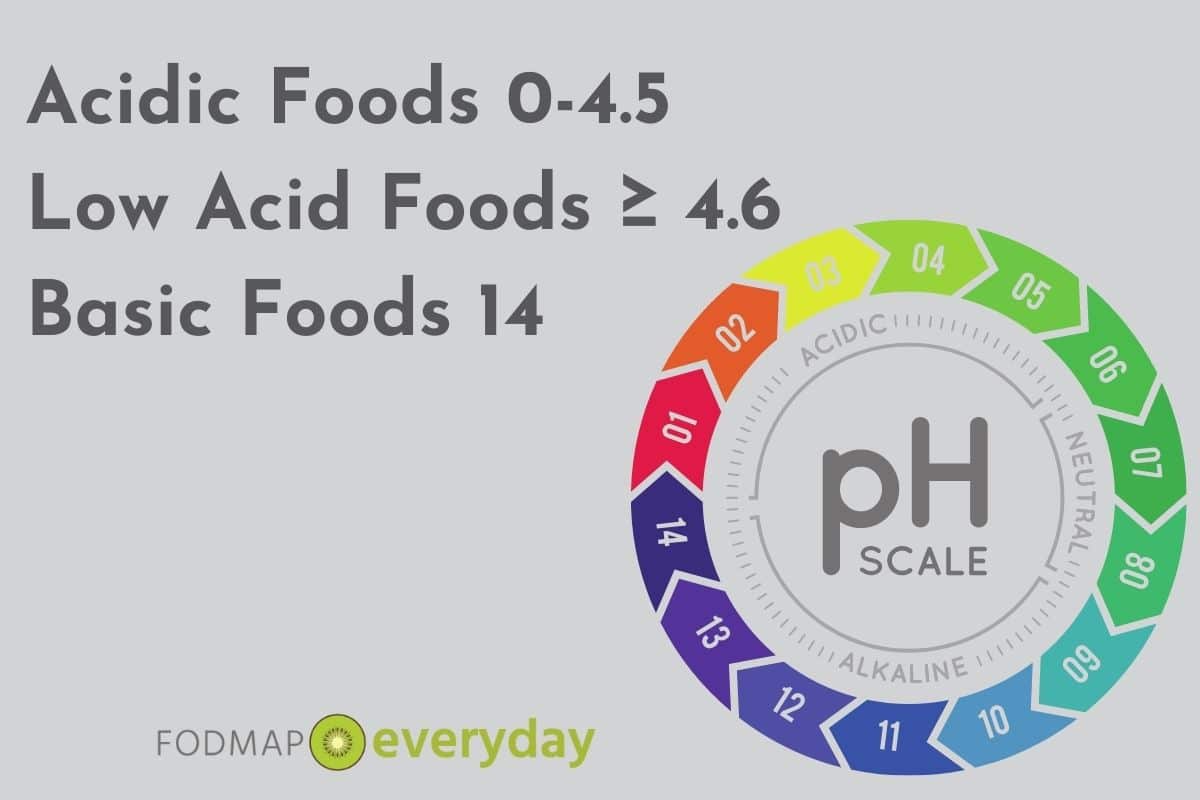
The pH levels found in the body vary depending on the area of the body. For example, the highest acidity levels are located in the stomach (pH level 1.35-3.5). The high acidity levels in the stomach help to assist the body in digestion and protecting against pathogenic bacteria. The upper stomach typically has a pH between 4.0 and 6.5.4
The body as a whole has an incredible ability to maintain a balanced blood pH level despite whether people eat acidic foods or more neutral foods unless there is some underlying health issue. The lungs and kidneys are responsible for maintaining a constant pH level between 7.3 and 7.4.4
Acid Levels Of Food
Let’s look at some common foods in terms of acidity and pH levels before digestion. Some more acidic foods include vinegar and lemon juice with a pH of around 2.5 to 2.6 and canned tomatoes around 4. Fruits generally have a pH range between 2.8 and 4.6, although melons are a bit more neutral with a pH between 5.2 and 6.6.
On the other hand, vegetables are more neutral, with a pH range of 5-7. Protein foods such as chicken, meats, and seafood are also more neutral in terms of pH, ranging between 5.1 and 7.1.5
Acidic Foods To Avoid
Some of the foods that are recommended to avoid if you are sensitive to acid and notice increased symptoms of acid reflux include:
Low Acid Food Options
Some better choices that are less acidic to include if you are sensitive:
- Lean protein (chicken breast, seafood)
- Melon (cantaloupe, honeydew)
- Leafy greens
- Oatmeal
- Brown rice
- Ginger
The Current Research on Acidic Diets and GERD
There is often a relationship between diet and symptoms for those who have GERD. Foods can impact symptoms of GERD for a variety of reasons. Certain dietary components, including fats and carbohydrates, can affect the tone of the lower esophageal sphincter (LES) and motility, increasing symptoms. Acidic foods and beverages and spicy foods can increase symptoms in some people due to an irritation of the mucosa in the esophagus.
| Dietary target | Proposed mechanism of GERD symptoms |
|---|---|
| Acidic foods and beverages | Direct esophageal mucosal irritation |
| Carbonation | Increased gastric distention/TLESRs |
| Coffee | Reduction in LES tone |
| Alcohol | Reduction in LES tone/gastric motility |
| Chocolate | Reduction in LES tone |
| Mint | Reduction in LES tone |
| Spicy foods | Direct esophageal mucosal irritation |
| Fats | Reduction in LES tone/gastric motility |
| Carbohydrates | Reduction in LES tone |
| Late-night meal | Increased gastric acid production |
| Large meal | Increased gastric distention/TLESRs |
| Calorically dense meal | Increased gastric distention/TLESRs |
Table 1: Relationship between GERD and Diet1
Research: Correlation vs. Cause – The Jury is Still Out
It is essential to understand that acidic and spicy foods have not been shown to cause GERD, but they can increase symptoms for some people. The research is inconsistent, though. Therefore, this area should be personalized rather than used as a general recommendation for anyone with GERD.
For example, in a survey of 394 patients with heartburn, there was only a weak correlation between consuming higher acidity beverages and increasing symptoms. They also found that some acidic drinks did not impact symptoms as expected. Prune juice with a low pH (higher acidity) did not increase symptoms. In comparison, a higher pH (lower acidity) tomato juice did. There might be other factors involved besides the acidity level.6
Coffee and GERD
Coffee is complicated and worth taking a look at separately. Coffee has different components that could cause acid reflux symptoms, including the amount of caffeine, the level of acidity (pH around 5.0), and compounds from the roasting process that might impact tolerance.
Some of the older research suggests that coffee can decrease the tone of the lower esophageal sphincter. Still, more recent studies do not support this idea for those drinking less than 4 cups of coffee per day.1 There is some evidence that supports the notion that caffeine in coffee might increase symptoms of acid reflux, but this is likely not the case for everyone.2
Personal Experience
Personally, I have struggled with symptoms of acid reflux in the past and was able to identify my triggers as sugary, refined carbohydrates, chocolate (yes, how sad!), and coffee. Unwilling to give up my coffee, I have relied on low acid coffee for years, which seems to control my symptoms quite well.
Some people find that drinking a low acid coffee after eating breakfast rather than on an empty stomach is also valuable for reducing symptoms. Recently, I was excited to learn about Golden Ratio, a company that has developed a new coffee beverage that is low acid and certified low FODMAP by Monash University.
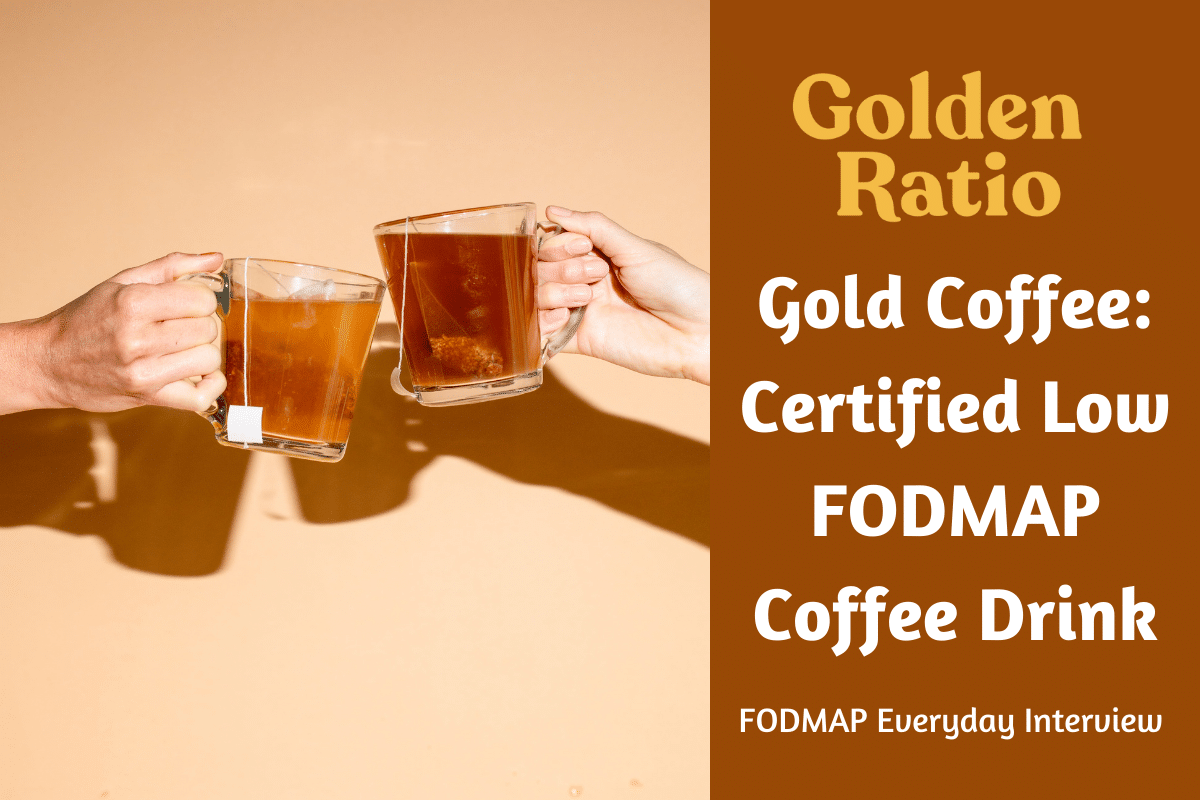
Learn More About Golden Ratio Gold Coffee: Certified Low FODMAP Coffee Drink
They state that their gold brew is five times less acidic than regular coffee. Also, note that only the original Gold Coffee pouches are certified low FODMAP and not the flavored varieties that contain some ingredients that have not been lab tested for FODMAPs by Monash University.
Being sort of a coffee snob, I was initially reluctant to try this product. My curiosity took over, and I gave it a shot. It is a cross between coffee and tea but has a nice full flavor with a caffeine level that can be tailored by the length of brewing time.
| Gold Coffee Flavor | Amount Of H20 For Brewed Hot | Amount of H20 For Brewed Cold |
|---|---|---|
| Original Gold (Low FODMAP Certified) | 80mg | 140mg |
| Chai Spiced | 45mg | 135mg |
| Vanilla Coconut | 80mg | 140mg |
| Golden Milk | 120mg | 130mg |
I love that it comes in the form of a “teabag” and is excellent for travel or enjoying a cup of coffee away from home that might help to prevent increased symptoms related to GERD. I was pleasantly surprised by how much I loved the taste of this coffee and found it nice to have another option besides my usual brand of low acid coffee.
The Takeaway
Suppose you notice that your GERD symptoms seem to increase after eating or drinking higher acidic foods. In that case, you might consider some of the suggestions in this article to personalize your diet – you might not have to give up coffee! It is always a good idea to discuss any significant changes to your diet with your health care team.
This Article Was Generously Sponsored by Golden Ratio Coffee
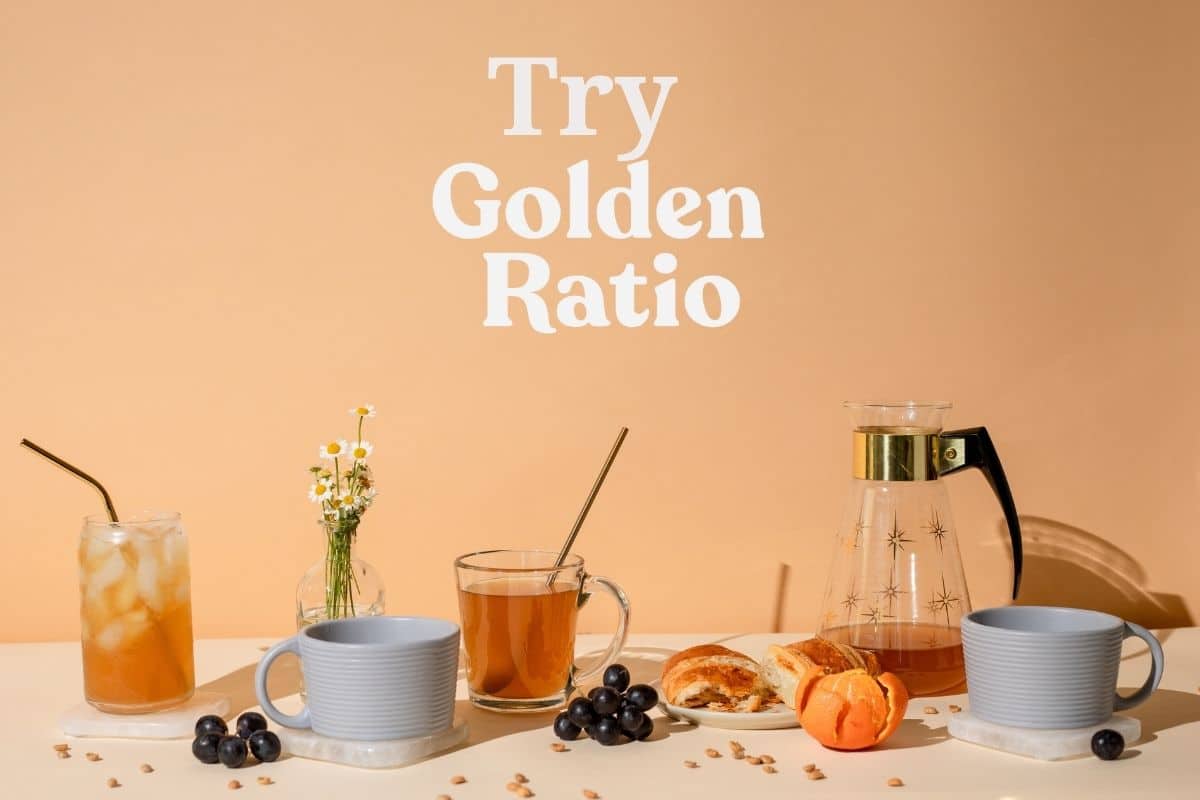
References
- Newberry, C., & Lynch, K. (2019). The role of diet in the development and management of gastroesophageal reflux disease: Why we feel the burn. Journal of Thoracic Disease, 11(Suppl 12), S1594–S1601. https://doi.org/10.21037/jtd.2019.06.42
- Gastroesophageal reflux disease: Nutrition guide for clinicians. (n.d.). Retrieved November 6, 2021, from https://nutritionguide.pcrm.org/nutritionguide/view/Nutrition_Guide_for_Clinicians/1342015/all/Gastroesophageal_Reflux_Disease?refer=true
- Rushing, J. E. (n.d.). Formulating dressings. 4. https://fbns.ncsu.edu//extension_program/documents/acidified_formulating_dressings.pdf
- Schwalfenberg, G. K. (2012). The Alkaline Diet: Is There Evidence That an Alkaline pH Diet Benefits Health? Journal of Environmental and Public Health, 2012, 727630. https://doi.org/10.1155/2012/727630
- What is pH? | College of Agriculture, Forestry and Life Sciences | Clemson University, South Carolina. (n.d.). Retrieved November 19, 2021, from https://www.clemson.edu/extension/food/canning/canning-tips/44what-is-ph.html
- Feldman, M., & Barnett, C. (1995). Relationships between the acidity and osmolality of popular beverages and reported postprandial heartburn. Gastroenterology, 108(1), 125–131. https://doi.org/10.1016/0016-5085(95)90016-0
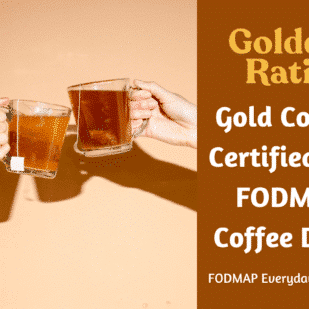







Just a comment about the article on Gold Roast coffee. My understanding is that dark roast coffee is less acidic than lighter roasts.
I believe that is due to the longer roasting of the beans reducing their acidity. As to caffeine, dark and light roast beans have similar caffeine contents but the method of measuring them (volume vs weight) to brew them affects the resulting caffeine content of the brewed coffee.
I have serious GERD issues. After many years of being a coffee addict, dark roast decaf with a pinch of baking soda works for me.
Hi Jackie, As with so many food related issues, there are nuances. We are lucky enough to have a Community member who is a coffee scientist and have had many conversations with her about this. There are many things to think about… there are many different types of acids in coffee beans and while one can show acid reduction through pH testing there is the additional question whether the acid that is reduced has any relationship to digestive upset.
Here is some info from her…”from the industry’s experts on coffee chemistry, Dr, Joseph Rivera, who offers classes and certification in coffee science… Chlorogenic acid breaks down to Quinic and Caffeic acid with heat exposure, whether that is during roasting, long extraction time, or by letting drip coffee sit on the warmer too long. So I agree that the darker the roast, the more quinic acid that is present but I am not aware that Quinic acid has been definitively linked to any digestive issues. Di-chlorogenic acid is the compound that I have heard most linked, this is highest in lighter roast coffee and robusta coffee.”
Here are some links for further reading.
https://www.coffeechemistry.com/chlorogenic-acid
https://www.coffeechemistry.com/quinic-acid
And, of course, it can all be very individual – good for you for figuring out what works for you.
I, too, deal with GERD and IBS.I have following the low FODMAP diet that I have tweaked to remove high acid foods. It has taken me a while, but I am quite comfortable with my limitations. I do push them now and then. I have found that I can eat some tomato sauce with a lot of carrots. Small amounts, once in a while. I have found some safe garlic. I still eat too much sugar but I have had nothing to drink but water for 18 months, including my beloved home brewed swee’tea. No chocolate. I have lost about 50 lbs which is encouragement to stay on the diet. The biggest things that help me are not over-eating and making sure I get enough fiber. I was never aware of my GERD, but I also had an ulcer and have a small but contrary hiatal hernia.
It takes a lot of reading and thinking and commitment, but it can be done. My husband is the greatest help of all, he has even been doing a lot of the cooking. We have learned to use a lot of herbs that we had never used before, coming from homes where fresh ground pepper was considered high falutin’.All kinds of adventures await!
Oh Ann! There is so much here in your message, and thank you for writing. Of course, I’m very sorry that you’ve been going through the medical issues that you’ve been experiencing, but I am thrilled that you have discovered cooking from scratch, using whole foods and a whole new way of eating that has helped you. When I read this sentence, “It takes a lot of reading and thinking and commitment, but it can be done”, it lifted my heart. I know it will encourage others. As someone who suffered with IBS for almost 30 years myself, I know how demoralizing it can be. No one likes being in pain for the majority of their life. And this diet does take a lot of self-education. We are so glad that you found us, that you are part of our community and that this article spoke to you. As you said, all kinds of food and culinary adventures do await those who are willing to put in the work. But boy, is it worth it!